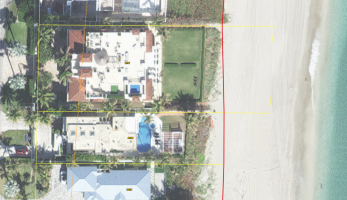jar546
CBO
The Coastal Construction Control Line (CCCL) is a line established by the state of Florida to regulate construction and development in coastal areas. The purpose of the CCCL is to protect coastal resources and reduce the risk of damage to property and the environment from coastal hazards such as storm surges, hurricanes, and erosion.
The CCCL is typically established by the Florida Department of Environmental Protection (FDEP) and is based on the state's coastal zone management plan. The line is generally located landward of the mean high-water line, which is the average high-tide mark, and is intended to provide a buffer between coastal development and the most vulnerable coastal resources.
Any construction or development that takes place within the CCCL requires a permit from the FDEP. The permit process includes a review of the proposed project's potential impact on coastal resources, including the environment, coastal processes, and the public's access to and use of the beach.
Additionally, the CCCL is an important tool to help ensure that development is sited, designed, and constructed to withstand coastal hazards, and to minimize the potential for damage to property and the environment.
In summary, the Coastal Construction Control Line (CCCL) is a line established by the state of Florida to regulate construction and development in coastal areas. This line is intended to protect coastal resources and reduce the risk of damage to property and the environment from coastal hazards such as storm surges, hurricanes, and erosion. Any construction or development that takes place within the CCCL requires a permit from the state and must pass a review of its potential impact on coastal resources.
Everything to the right of the dotted orange line is east of the CCCL

The CCCL is typically established by the Florida Department of Environmental Protection (FDEP) and is based on the state's coastal zone management plan. The line is generally located landward of the mean high-water line, which is the average high-tide mark, and is intended to provide a buffer between coastal development and the most vulnerable coastal resources.
Any construction or development that takes place within the CCCL requires a permit from the FDEP. The permit process includes a review of the proposed project's potential impact on coastal resources, including the environment, coastal processes, and the public's access to and use of the beach.
Additionally, the CCCL is an important tool to help ensure that development is sited, designed, and constructed to withstand coastal hazards, and to minimize the potential for damage to property and the environment.
In summary, the Coastal Construction Control Line (CCCL) is a line established by the state of Florida to regulate construction and development in coastal areas. This line is intended to protect coastal resources and reduce the risk of damage to property and the environment from coastal hazards such as storm surges, hurricanes, and erosion. Any construction or development that takes place within the CCCL requires a permit from the state and must pass a review of its potential impact on coastal resources.
Everything to the right of the dotted orange line is east of the CCCL

